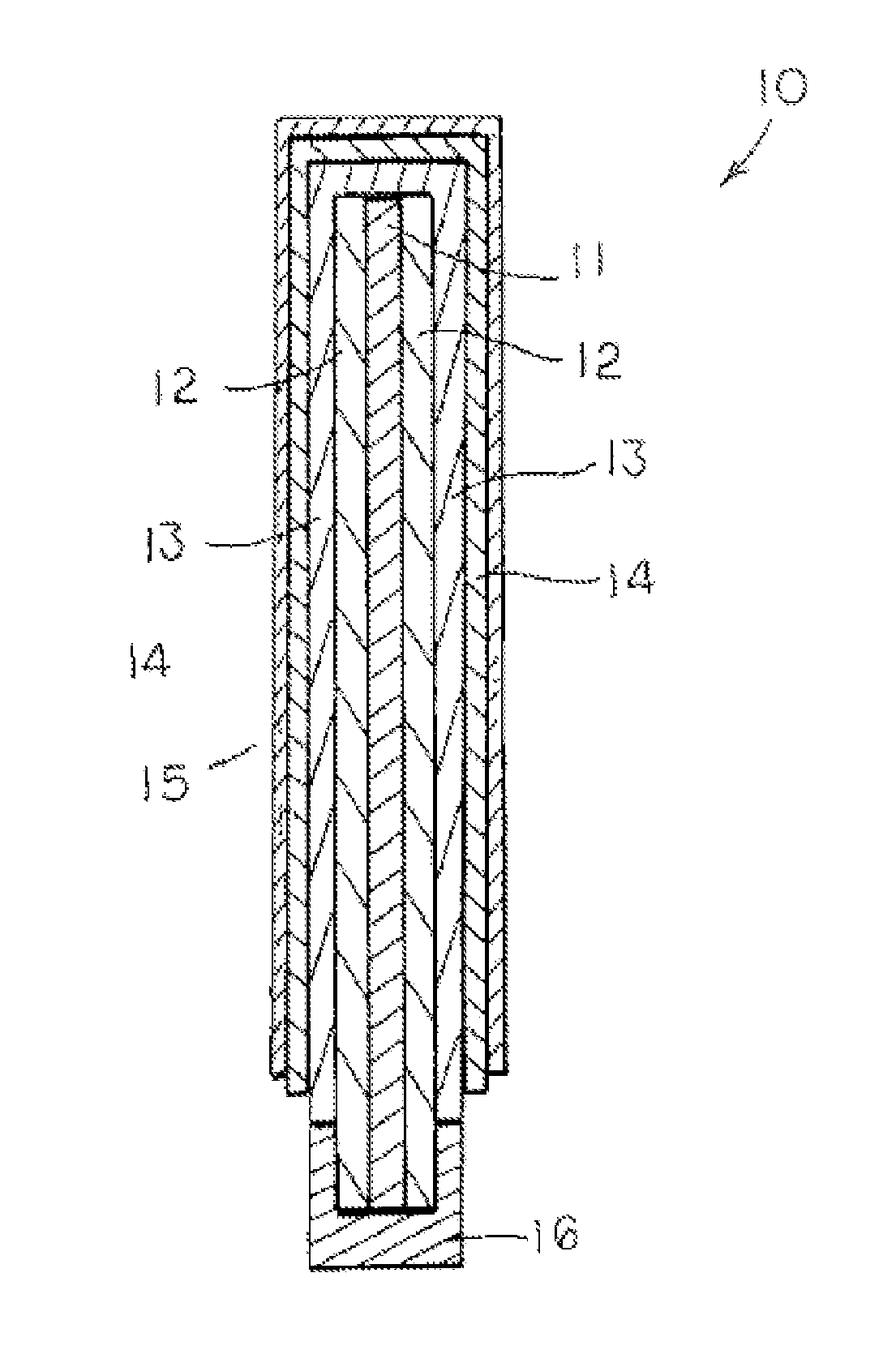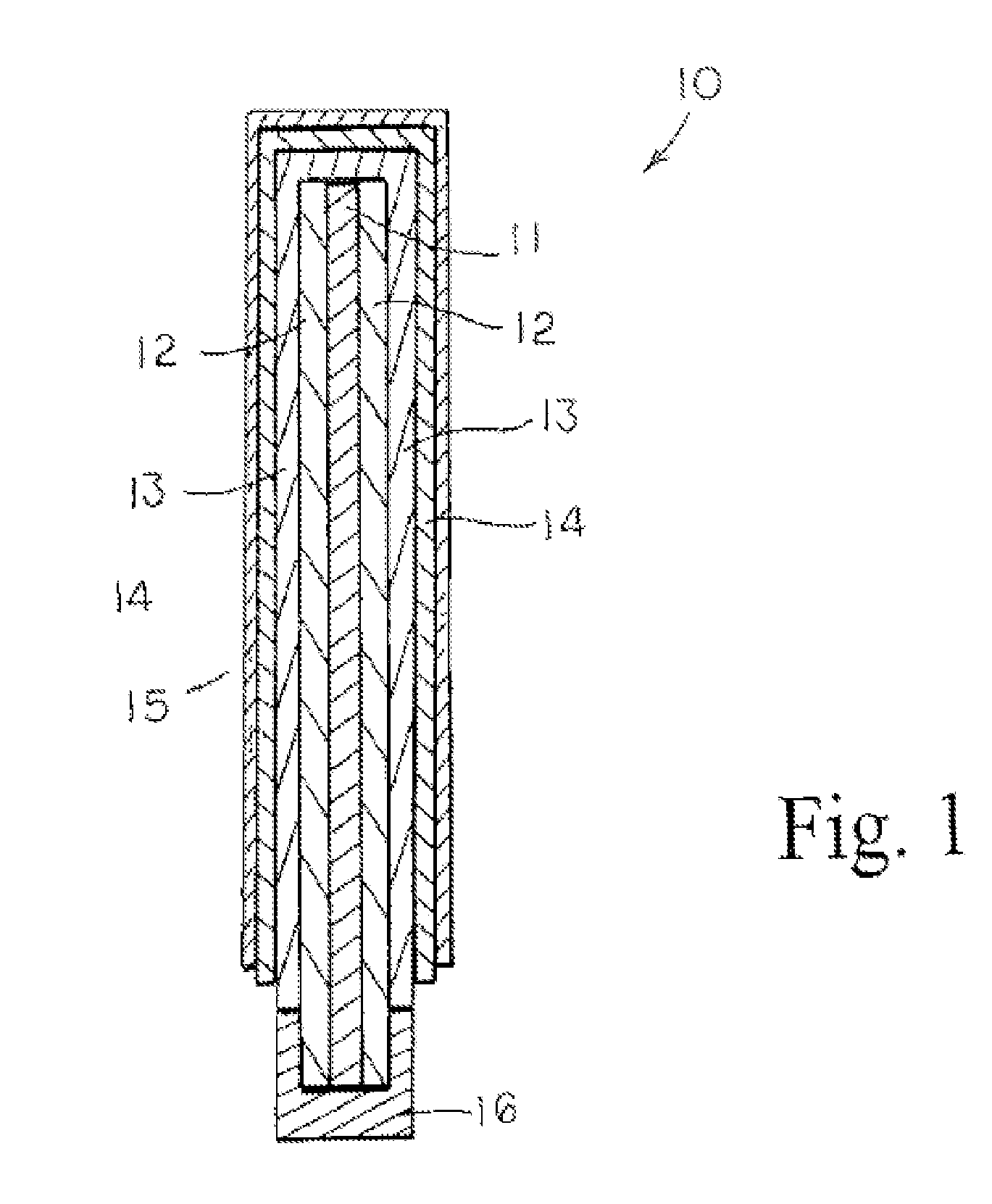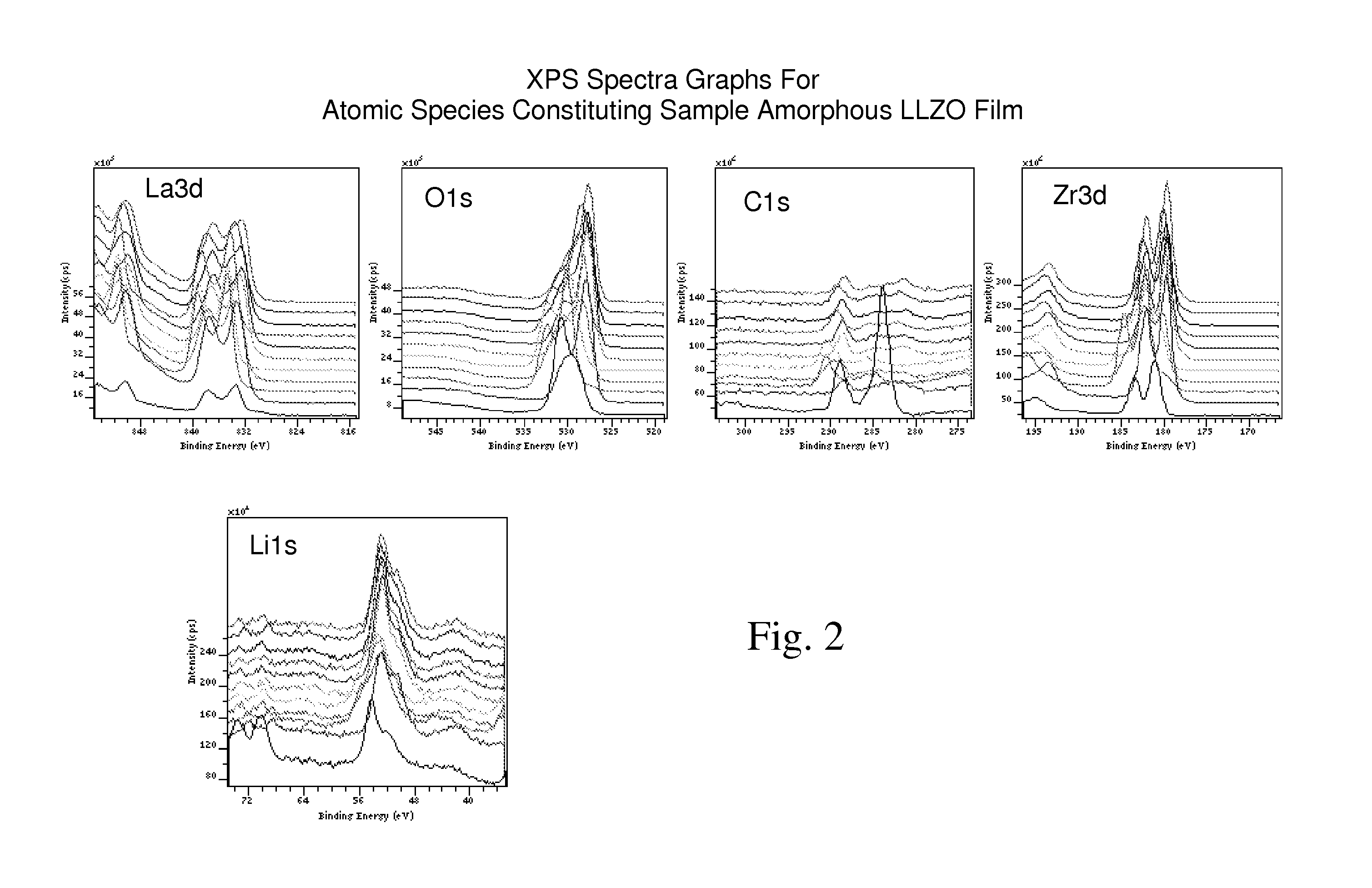Ionically-conductive amorphous lithium lanthanum zirconium oxide
a lithium lanthanum zirconium oxide, ionically-conductive technology, applied in the direction of non-aqueous electrolyte cells, sustainable manufacturing/processing, final product manufacturing, etc., can solve the problems of cell performance, hazardous conditions, and certain liquids that are useful as effective electrolytes can create hazardous conditions
- Summary
- Abstract
- Description
- Claims
- Application Information
AI Technical Summary
Benefits of technology
Problems solved by technology
Method used
Image
Examples
synthesis examples
[0060]The ingredients in the examples described below are readily-obtainable chemical compositions that may be purchased from many different chemical suppliers in the United States such as but not limited to Gelest, Inc., which at the time of this writing is believed to have an address of Gelest, Inc., 11 E Steel Rd, Morrisville, Pa. 19067, and a website at www.gelest.com and Alfa Aesar, which at the time of this writing is believed to have an address at 26 Parkridge Rd, Ward Hill, Mass. 01835, and a website at http: / / www.alfa.com / en / gh100w.pgm.
[0061]Lithium butoxide is also know as lithium tert-butoxide (LTB); lithium t-butoxide; lithium tert-butoxide; lithium tert-butylate; 2-methyl-2-propanolithium salt; 2-methyl-2-propanol lithium salt; lithium tert-butanolate; tert-butoxylithium; tert-butylalcohol, lithium salt; lithium tert-butoxide solution; lithium butoxide min off white powder; and lithium 2-methylpropan-2-olate. It has the molecular formula C4H9LiO. It in particular may be...
example 1 of
Production of Amorphous LLZO Electrolyte Medium
[0069]The amorphous LLZO precursor solution was prepared by dissolving about 4.5 grams of a lanthanum methoxyethoxide solution, about 0.65 gram of lithium butoxide and about 0.77 gram of a zirconium butoxide solution in about 5 grams of methoxyethanol.
[0070]Lanthanum methoxyethoxide and zirconium butoxide were used in solution form for convenience in mixing; however, the invention encompasses use of these compositions without being pre-dissolved. The lanthanum methoxyethoxide solution comprised lanthanum methoxyethoxide pre-dissolved in methoxyethanol whereby lanthanum methoxyethoxide comprised approximately 12% by weight of the total weight of the lanthanum methoxyethoxide solution. Similarly, the zirconium butoxide solution comprised zirconium butoxide pre-dissolved in butanol whereby zirconium butoxide comprised approximately 80% by weight of the zirconium butoxide solution.
[0071]The components may be mixed in any sequence as the seq...
example 1 (
Example 1(B)
Formation of Substrate by Casting
[0074]The amorphous LLZO precursor solution was prepared as described above. For casting, the precursor solution optionally may be heated at approximately 100° C. under an inert gas to increase the density and viscosity of the solution. This optional step was utilized in some samples that were produced.
[0075]The amorphous LLZO precursor solution was cast on a suitable substrate that facilitated support and then selective release of the formed layer. The layer that was formed was initially a solution. After further processing the layer may transition into a film, or a powder, or a combination of two or more of solution, film and powder. The freshly-cast LLZO was placed in a closed container and exposed to ozone-rich air environment (ozone concentration larger than 0.05 ppm) for approximately 1 hour, although longer exposure times may be used as well. In this step, as an alternative, the closed environment may be solvent-vapor-rich (for exa...
PUM
| Property | Measurement | Unit |
|---|---|---|
| ionic conductivity | aaaaa | aaaaa |
| thickness | aaaaa | aaaaa |
| ionic conductivity | aaaaa | aaaaa |
Abstract
Description
Claims
Application Information
 Login to View More
Login to View More - R&D
- Intellectual Property
- Life Sciences
- Materials
- Tech Scout
- Unparalleled Data Quality
- Higher Quality Content
- 60% Fewer Hallucinations
Browse by: Latest US Patents, China's latest patents, Technical Efficacy Thesaurus, Application Domain, Technology Topic, Popular Technical Reports.
© 2025 PatSnap. All rights reserved.Legal|Privacy policy|Modern Slavery Act Transparency Statement|Sitemap|About US| Contact US: help@patsnap.com



